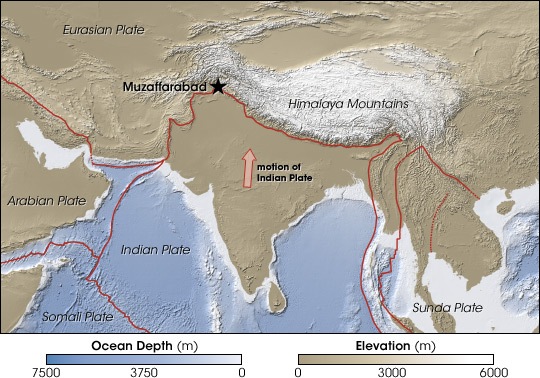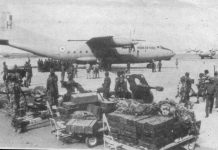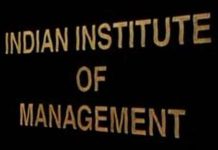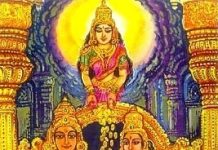In the continuing series of random facts on India, here are 50 Interesting Facts About India-Part 7.
1-10
1. Indian tectonic plate is the fastest moving tectonic plate on this planet. travelling all the way from south to bang into Asian tectonic plate. As of 2009, the Indian Plate is moving northeast at 5 cm/yr (2 in/yr), while the Eurasian Plate is moving north at only 2 cm/yr (0.8 in/yr). India is thus referred to as the “fastest continent”. This is causing the Eurasian Plate to deform, and the Indian Plate to compress at a rate of 4 mm/yr.
2. India and Madagascar were once a part of same land. Indian plate broke off from the southern super-continent Gondwanaland(which is now in pieces called as, Africa, Australia, Antarctica and India). This makes Indian plate as old as Australian plate or African plate and that means Indian subcontinent is the only subcontinent to have its own tectonic plate.
3. Himalayas are the youngest mountain range in the history of earth and are still rising.
4. Sabir Bhatia (Indian) founded Hotmail, the first free email service.
5. Vinod Dham designed the Pentium series of processors for Intel.
6. The Bhut Jolokia is among the hottest chili peppers in the world. It grows in Assam, Nagaland and Manipur.
7. India is the second largest English speaking nation in the world.
8. Only four countries namely China, USA, Indonesia and Brazil have a population higher than that of Indian state Uttar Pradesh and will soon overtake Brazil.
9. The Somnath Temple located on the western coast of Gujarat, India, is one of the twelve Jyotirlinga shrines of the God Shiva. The Somnath Temple is known as “the Shrine Eternal”, having been destroyed 16 times by Muslim invaders. Most recently it was rebuilt in November 1947, when Sardar Vallabhbhai Patel visited the area for the integration of Junagadh and mooted a plan for restoration. After Patel’s death, the rebuilding continued under K. M. Munshi, another minister of the Government of India.
10. Communism was alive and kicking in 2 states (elected officials) just 5 years ago.
11-20
11. India has the largest number of news channel in the world. India has 5600 newspapers, magazines in over twenty-one different languages with a combined readership of over 120 million. It is the fastest growing telecom market in the world and has the lowest call rates on earth.
12. Any Indian citizen, who is not a resident of Arunachal Pradesh, Mizoram and Nagaland needs a special permit to enter these states.
13. There are regions in the North-Eastern India which are more similar to other eastern nations such as Tibet, China and Korea in terms of food, clothing and culture. There are some places where dog is a delicacy.
14. There is about 2 hour difference between Arunachal Pradesh in Easternmost point & Gujarat in Westernmost point.
15. Gujarat Forensic Sciences University situated in Gandhinagar, capital of Gujarat is the only university across the world, dedicated to Forensic & Investigative Science which is established by the Government of Gujarat.
16. India has a series of coins in circulation that are in Braille.
17. The Indian coins have a mark at the bottom, (under the date of issue of coin) which tells where it was made. In India, coins are minted in four cities. Bombay Mint has a diamond under the date of the coin. Calcutta mint has no mark under the date of the coin. Hyderabad Mint has a star or a diamond under the date of the coin. Noida mint has a dot under the year of issue.
18. In terms of geographical area, India occupies only 2.4% of the world’s total land area, yet it is home to around 60% of the world’s biodiversity.500 species of mammals out of which 21 are not found anywhere else in the world. Altogether more than 2000 species of birds can be seen in India. The whole of North America excluding Mexico, is 15 times larger than India, yet contains no more than 775 species.
19. Until 1896, India was the only source of diamonds in the world.
20. India at one point of time was the “Highest taxed nation in the world”. Under the Emergency and Garibi Hatao concept, income tax levels in the early 1970s rose to a maximum of 97.5%, a record in the world for non-communist economies.
21-30
21. India’s electorate is of 714 million (larger than the electorate of the European Union and United States combined). India has had the largest democratic elections in the world to date.
22. There were 828,804 polling stations around the country.
23. The polling station in Banej village in the Una segment of Junagadh, Gujarat had the unique claim to being the only polling station in the country that catered to a single elector – Guru Shree Bharat Das Ji Bapu, a priest of a Shiva temple in the middle of the Gir Forest.
24. Other such polling stations – Marambo polling booth, Dibang Valley district and Upper Mudoideep, Changlang had 3 voters each, while Malogam in Anjaw and Sikaridong in West Kameng had 4. Lamta, East Kameng district: 5, Matkrong, Anjaw and Dharampur-II, Changlang district: 7, Punli booth:9. (all in Arunachal Pradesh). These are inaccessible areas with no motorable roads. The polling officials had to trek in hilly terrains for two days to reach them.
25. This year in Karnataka assembly elections, 10 polling booths we set up in remote areas of the Western Ghats that could be accessed through boats only. The EC made the required arrangements for the voters.
26. Speaking of elections, the Modakurichi constituency in Erode district in Tamilnadu had nearly 1050 candidates in a general election to the Tamilnadu legislative assembly in 1996. The total number of registered voters in Modakurichi is less than 4000. Total mischief in the name of “democratic revolution” which local activists used to defeat the candidates of the major two parties. The “big” two thought one of them would win, but both of them even lost their deposits.
27. Wikipedia has wrong information that the ballot paper was a booklet in that Modakurichi election. It was a big mat sized paper, on which people had to crawl on their knees to get to their candidate’s icon in order to vote. Since there was no box, they had to seal a room and leave a window open to throw the folded ballot paper into.
28. People expected the PINCODE (Postal Index Number Code) would be a failure in a largely illiterate country when it was introduced. It became a runaway success.
29. Vasco da Gama did not discover India instead he was escorted to India by Indian Traders from Cape Town. This is in Vasco Da Gama’s own journal.
30. Companies expected fat free milk will become a hit with Indians as a “healthy” alternative. Indians trashed the notion.
31-40
31. Somen Debnath is an India who has been cycling around the world for nine years, has already visited 80 countries and plans to visit 190 countries by 2020 to spread AIDS awareness.
32. India leads the world with the most murders (32,719), with Russia taking second at 28,904 murders per year.
33. The Hindu Mahasabha, the forerunner of RSS and BJP opposed the Quit India Movement.
34. Honda India was fined approx. USD 26 Million for reducing the price of its cars in India by the Indian Government.
35. Delhi gangrape incident would not be a part of NCRB rape statistics for the year 2012, because the most serious charge mentioned in a FIR is taken into account. By this logic, an incident of rape and murder is recorded as murder, because murder is a more serious offence in law than rape
36. There is a Hastinapur in Argentina, honoring Hindu deities and promoting religious harmony
37. Rajasthan govt has an open prison (khula bandi shivir) with no walls, no cells and no guards. No prisoner has ever escaped in 51 years.
38. ‘Santosh Kumar Singh‘ fought for nine years with Government & had to run pillar to post to prove that he was alive & not dead as claimed by official Govt records.
39. BSNL pays 53% of its revenue as salaries. Private operators pay less than 10%.
40. Ancient Indians used standardized calibration devices for measurement, and had a uniform system of weights and measures to gauge length, mass and time.
41-50
41. Forbes awarded the Mumbai’s dabbawallahs(system) a 6 Sigma performance rating (a term used in quality assurance if the percentage of correctness is 99.9999999 or more).
42. Shahjahan did not ‘literally’ cut off the hands of the workers of Taj Mahal. They were simply put under oath to never participate in the construction of any similar project. Also, the Taj Mahal’s walls were decorated with actual gem stones. It is believed that the British plucked them all out. If you look closely, you can see the sockets where the gems might have been.
43. Akbar tried to start his own religion by combining the features of Hinduism, Christianity and Islam. That religion had a total of 4 followers. His Christian wife converted to that religion, his Hindu and Muslim wife both refused to be converted.
44. The Taj Mahal is actually Earthquake proof. The minars do not point up straight but are in fact slightly leaning diagonally away from the tomb. The idea was that in the event of an earthquake, the minars should fall away from the central structure.
45. Near Rajgir in Bihar lies the legendary wrestling pit (akhara) of Jarasandh (from the epic Mahabharatha); the soil around is brown and black, but the pit itself is white. Legend has it that he used to have it washed by milk, and hence the color.
46. During late 17th and early 18th centuries, Indian shipbuilders were one of the best in the world. Alas, our navies (Marathas and Mughal) were not aggressive enough to rule the high seas. British fought French and American navies using ships built by Indians (Wadias of Bombay).
47. During the war of 1812, an American poet who was sailing on a ship built by Wadias in Bombay, India composed the American national anthem – “The Star-Spangled Banner”.
48. Keling is a word used to describe people originating from the Indian subcontinent by native Malaysians and Indonesians. The origin of the term is rooted in the former cultural and economic influence of the Kalinga kingdom over south east Asian kingdoms. The ancient Indian Kalinga was located in southeastern India occupying modern day Orissa and northern Andhra Pradesh.
49. Indian museums are not particularly renowned but in Mumbai’s Asiatic Society lies one of the two original copies of Dante’s “The Divine Comedy”.
50. There are still old Milestones in and around Mumbai from the days of the British raj.






































